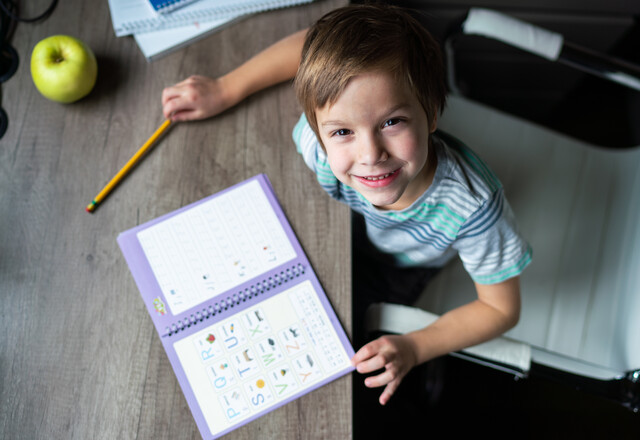In fact, many of us may have children, or know children, who have experienced bullying at one time or another. Today it is because such an issue across the nation that some schools have adopted �zero tolerance� policies to try to deal with it, while others has developed programs and groups to take it on and try to keep it out of their schools. It is a problem that seems to be growing, as well. In research conducted in 2007 by the Stanford University School of Medicine, they found that around 90 percent of all elementary age children had at one time or another been bullied by their peers.
You will learn what bullying is, how to identify it, what the impact of it is, and the many ways to deal with it to try to prevent it from happening. What you learn can be used in a myriad of ways to help just your child or classroom, or to help the masses. The choice, and ultimately the reach, is completely up to you!
What is bullying?
Bullying can be direct or indirect, where either it happens directly to the victim, or it may be something that "gets back" to the victim, such as rumors, threats, or something of the like. There are also several different ways that this bullying can delivered, including the following.
- Physical bullying. This is bullying that involves the child being touched in one way or another. The bully may kick, hit, punch, trip, or more. Nevertheless, it involves the bully being physical in one way or another. It is estimated that around 30 percent of all bullying at the elementary school level involves some sort of physical form.
- Verbal bullying. This type of bullying involves words either being said to the victim directly, or about the victim indirectly. The bully may tease or taunt the victim, or spread rumors about the person.
- Social alienation. This type of bullying happens when the bully tries to get others to alienate the victim. Their mission is to leave the victim feeling all alone, like they do not have any friends, or by getting others to stay away from the person. Therefore, in the end, the victim has been socially alienated by their peers, which can have severe consequences.
- Cyberbullying. This is a newer type of bullying than prior generations had to deal with, as it involves electronic routes of bullying, such as online, through text message, or through emails. Those who use cyberbullying may end up sending threatening emails or text messages, or may post rumors about the person online. They may even pose as the victim and create a bogus Facebook account. Today there are many ways that bullies can engage in cyberbullying, and the perceived anonymity of the Internet makes many people feel more comfortable and protected doing so. However, as we will learn later, there are ways to also take on cyberbullying and help prevent and end it.
It may seem as though indirect or non-physical forms of bullying are not nearly as serious as those that are direct or involve physical altercations. It can still have some serious psychological issues. It can also lead to serious physical altercations. Bullying is also at times discounted as being something that all children go through, so it shouldn't be worried about. This is totally wrong, as it can have serious implications in a child's life, both at the time and later on in life. All bullying is serious and can be potentially physically dangerous, therefore it should all be address immediately, regardless of what type of bullying it may be.
As you have just learned, bullying at the elementary level is quite widespread, and in fact, most children experience it at some time. Bullying at the middle and high school levels still exist, but research shows that it tends to taper off some at each level. The NIH reports that around a third of all middle school and high school students are bullied at some point. In research conducted in 2007, they reported that in that one school year there were around 2.8 million middle and high school students, or around 1 out of every 9, that were bullied. The reports showed that they had been tripped, spit on, shoved, pushed, and threatened. In addition to that, another 900,000 high schools were reported to have been cyberbullied during that one school year.
The number of bullying incidents appears to decline as children get older, but that does not mean that at the middle and high school level they should be taken more lightly. Some at that level may be even more violent or have more serious implications. The best time to take on bullying is to start the prevention and addressing of it at the elementary level. That way, children progress to each grade and school knowing that it is not acceptable behavior, and will be more apt not to engage in bullying.
The Impact of Bullying
Its reach is widespread, affecting most children at the elementary school level. In this article, we will look at some of the affects that all that bullying has on the nation's children. While, as the research shows, bullying tends to decrease as children age, the seriousness of it remains. Children at all age levels can experience a variety of problems from being bullied. Some of those problems may be short lived, while others can have long lasting and devastating results.
Many issues can affect a child's self-esteem. Such things as what they watch and compare themselves to on television, or how their parents interact with them can have a far reaching affect. Children's self-esteem can be greatly influenced by many people around them, including coaches, family members, and friends. When they begin going to elementary school they tend to start spending a lot of time around their peers, who unfortunately are not quite so interested in making sure that they develop a healthy self-esteem.
Bullying has a negative effect on ones self-esteem. Nevertheless, it is also interesting to note that those who have low self-esteem to begin with tend to be bullied more often than those with high self-esteem. Research published in the Journal of School Health in December 2010, found that those who had been involved in cyberbullying, both in doing the bullying and in being bullied, suffered from lower self-esteem. In fact, in the research's conclusion they reported that there was a significant relationship between low self-esteem and experiences with cyberbullying, and that those involved in cyberbullying had significantly lower self-esteem than those that had no experience with that type of bullying.
Bullying gives children low self-esteem, as it makes them feel that they are not liked, or that they are not capable of doing things that others may be able to do. There are many issues that can arise because of self-esteem. Some of the problems that bullying can lead to include depression, low academic performance or participation, aggression, and even suicide.
The American Academy of Child & Adolescent Psychiatry (AACAP) estimates that at any given time around 5 percent of the children and adolescents are suffering from depression. While that may seem like a low number, it is difficult to think about a child in elementary school being depressed. It is a time when their life should be filled with laughs, fun, and they should be worry free for the most part.
- Crying and sadness.
- A loss of interest in activities that were previously enjoyed.
- A feeling of hopelessness.
- Ongoing boredom.
- Being extremely sensitive to failure or rejection.
- Having low self-esteem.
- A change in one's eating or sleeping habits.
- Frequently complaining of illnesses such as stomachaches and headaches.
- Difficulty concentrating.
- An increase in irritability.
- Thoughts or acts of self-destructive behavior.
Some parents may find that their depressed child who used to enjoy playing with friends, yet gets to the point where they just want to be alone. Children who are depressed are at an increased risk for suicide, as well as other self-destructive behaviors, such as cutting (cutting themselves).
Parents, or school administrators, who suspect that a child is depressed, should have the child evaluated by a mental health professional. If the depression is found to be a result of, or a contributing factor to, the child's depression it is essential to work with the school to address and resolve the issue, as well as to work with the mental health professional to help address the depression.
Did you know?
According to the Centre for Clinical Interventions, the beliefs that we have about ourselves, which make up our self-esteem, are a result of experiences we have had, especially those that have taken place in early life. While we learn these beliefs from experiences, observations, and even the media, we also learn them from listening to what others say about us.This is why bullying is so destructive, because it helps to lay the foundation for how a child sees themselves.
Depression can be the first sign before a child commits suicide. While we do not tend to realize that suicide is an issue with elementary school children, it is actually quite a serious problem. In fact, the AACAP reports that it is the sixth-leading cause of death for children ages 5-14 years. It is the third leading cause of death among those ages 15-24 years.
Research conducted by Yale University confirms the connection between bullying and suicide, as well as suicidal thoughts and attempts of suicide. Their research found that children who are bullied are 2 to 9 times more likely to have suicidal thoughts than those who are not bullied. Their study also found that those who do the bullying also have a higher risk for suicide, as well as for suicidal thoughts.
Many suicide warning signs are similar to those of depression. Children who are considering suicide may be depressed, withdrawn, or may even make remarks about dying or killing themselves. Other signs, in addition to the ones for being depressed, including possible drug or alcohol use, personality changes, neglecting their personal appearance, loss of interest in life, or they may even begin giving some of their things away. Parents who have a child who is bullied, or one who is the bully, should pay special attention to such warning signs, and seek help from a mental health professional immediately if they are recognized.
There are many issues associated with bullying, and they can have a lasting affect. It is estimated that in America, each school day there are around 160,000 children who stay home from school out of fear of bullying. Such absences are bound to lead to lower academic performance, in addition to the lower self-esteem issues. Many children who are bullied go on to have emotional problems, or low self-esteem as adults as well.


























